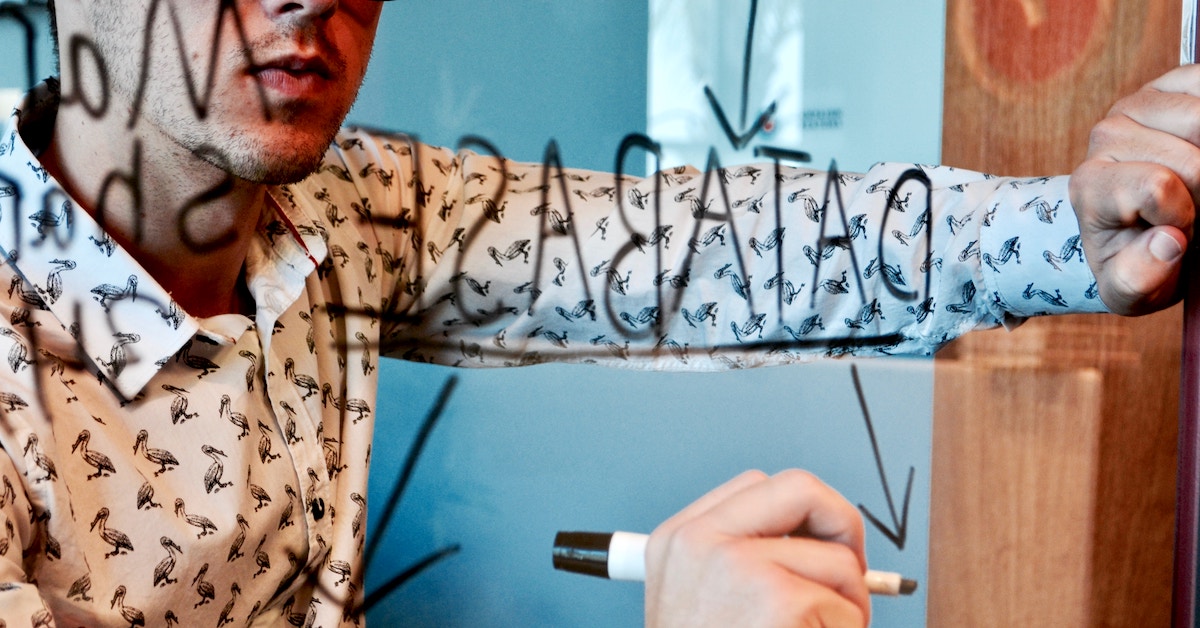
Does It Actually Matter Where I Get My MBA?
An MBA delivers a significant return on investment, not just [...]
Design engineering is the process of creating things of all shapes and sizes—from the smallest vacuum to the largest wind turbine. If that isn’t enough to close the deal, how about this: engineering is also one of the highest-paying entry-level careers in the business world. Join this profession and you don’t have to wait for the payoff.
Design engineering has many different subspecialties. What they share in common is that, across disciplines, design engineers focus on the science of how things are made. They are often involved with a project from the first blueprints to the final touches. It’s a great job for those who enjoy seeing something through from concept to completion.
In this guide on how to become a design engineer, we’ll cover:
Design engineering is very much about experimenting with the concepts you already know to improve upon them. The term “design engineer” encompasses a broad range of roles for a broad range of employers. As a design engineer, you might work for a hydroelectric power plant to design and produce new systems. Or, you may work for Dyson and design vacuums. Mechanical and civil engineering disciplines both require professionals with a design engineering background, meaning significant job crossover. Both jobs require an engineering degree.
Top employers for design engineers include:
If you secure a government design engineering job, it’ll likely be on the mechanical engineering side, especially in the Navy and Air Force. According to USA Jobs, these professionals “Perform engineering duties in planning and designing tools, engines, machines, and other mechanically functioning equipment.”
Working for a construction company means you’ll focus on civil engineering, which involves building things like roads and other infrastructure projects. On the design side, you’ll work with clients to create the projects and comply with regulations.
These professionals work in industrial design—the process of actually making new products. You’ll focus on aesthetics and graphics plus practical product developments—frequently with a mechanical engineering or research and development job title.
Top skills that design engineers use include:
You’ll use computer-aided design software, such as AutoCAD, to design working models for prototypes and products.
Engineers typically don’t need coding experience, however, it can be useful for mechanical engineers. Basic coding ability in one of the main languages like Python or C++ has practical applications in areas like numerical analysis.
Great engineers must have creativity. You must visualize, design, and refine new ideas, often without the help of existing blueprints.
There’s a good chance you’re not going to be a self-employed design engineer. You’ll probably need to be exceptional at taking notes and incorporating them into your products. You must have the communication skills to work with people lacking an engineering background.
Having good problem-solving skills is necessary as a design engineer, especially when balancing aesthetics with technical needs.
Teams of design engineers may work on one aspect of the design process. As a team leader, you’ll need time management and project management skills.
There’s a reason it’s called the design process. You rarely get things right the first time, and as a design engineer, like most jobs, you’ll need to work continually on improving your products and trying different solutions.
According to Indeed, design engineers earn an average annual base income of $80,270, plus an additional $3,000 per year in bonus payments.
You will be able to put your stamp on products in the design phase.
There are many ways to advance in the field, especially those who continue to specialize in their training and skill set (e.g., three-dimensional printing, virtual simulations).
The male-to-female ratio in undergraduate engineering programs still not every good, even though there has been a push to involve more women in STEM. This gender imbalance in degree programs translates to a similar imbalance in the workplace.
Design engineering requires a meticulous focus on detail, often with lots of revisions to the project. A design engineer may have trouble maintaining a satisfactory work/life balance.
Just about every great inventor began by tinkering with things as a child. As a design engineer, the earlier you start experimenting, the more beneficial it is to your career. Design engineers who work for Dyson say they started out by simply taking things apart and trying to figure out how they work.
For those looking to jumpstart their STEM careers before college, there are a number of engineering summer camps for high schoolers. There are even international robotics competitions that help young learners explore their passions. These types of activities can bolster a college résumé.
The obvious choice when it comes time to select a major during your undergraduate education is a bachelor’s degree in engineering. When selecting a school, make sure to consider its accreditation status with the Accreditation Board for Engineering and Technology (ABET). This organization is responsible for certifying engineering programs, and most employers prefer candidates with ABET-certified degrees.
If you’re interested in becoming a design engineer, you might consider specializing your bachelor’s in one of the following disciplines:
You can earn a Bachelor of Science in Design Engineering degree at
Northwestern University. Students learn the manufacturing and mechanical skills necessary to start a career in engineering management. Learning outcomes include knowing how to apply math, science, and engineering principals, interpret data, conduct experiments, design systems to fit constraints, and problem solve.
The Manhattan College electrical engineering program “teaches you the physical and engineering principles needed to design and operate” electronic and medical devices, building wiring, biomedical instrumentation, power grids, communication systems, nanotechnology, and defense systems.
This program may not be as directly related to design engineering as others, but it does still incorporate many of the same skills. If you want to be a design engineer in the field of electronics, this major is worth considering.
This is the field that overlaps most with design engineering. To put it simply, mechanical engineering and design engineering can be two separate career paths, or they can include jobs with aspects of each (e.g., mechanical design engineer). Mechanical engineering involves taking a product from idea to marketplace, which is quite similar to the work of a design engineer. That’s why it’s not uncommon for a design engineer to hold a mechanical engineering degree.
Many top schools offer mechanical engineering programs, including Columbia University. The school notes that the discipline is “the study of objects and systems in motion. As such, the field of mechanical engineering touches virtually every aspect of modern life, including the human body, a highly complex machine.”
Product design is another great major for aspiring design engineers. At Stanford University, you can complete a Bachelor of Science in Product Design that is tied to its mechanical engineering degree program.
The program emphasizes “the conception and design of product experiences for the benefit of society. It encourages creativity, craftsmanship, and personal expression while serving larger goals of common good.”
According to the program description for the visual design engineering major at Purdue University, these professionals “contribute artistic form and functionality to product design, whether that product is a service, software, or a physical item.” Though this is usually an aesthetics-focused field, the students get a comprehensive engineering education, completing work that involves “issues of functionality, problem-solving, efficiency, and simplicity of use.” These are all traits of a design engineer.
Licensure is rarely required for entry-level positions. However, it may be necessary to become a licensed engineer during your career. This process requires candidates to have an engineering degree from an ABET-accredited program, four years of relevant work experience (essentially an apprenticeship), and passing scores on two engineering exams (Fundamentals of Engineering exam and Professional Engineering exam).
As one advances in their career, becoming a licensed professional engineer may be more appealing. Still, not all engineers bother to attain a license. For those who take on the challenge, the process is similar across the country, though each state has its own licensing board. As a result, the details of licensure can vary from one state to another.
While many engineering bachelor’s degree programs prepare graduates to enter the professional world immediately, you generally need a master’s degree to be considered for senior positions.
The Harvard University Master in Design Engineering (MDE) combines “methods of analysis, visualization, conceptual inquiry, and open-ended exploration with the rigor and quantitative power of the engineering disciplines at School Of Engineering And Applied Sciences (SEAS) to address problems far beyond traditional design and engineering fields.” In other words, a master’s program can take what you think you know and push it way further. Plus, you’ll be able to advance your career and seek higher-paying, more prestigious positions in the field.
Design engineering competitions can be another valuable resource—they provide both networking opportunities and opportunities to show off your engineering skills to employers. The American Society of Mechanical Engineers puts on a number of design engineering competitions, including those for robotics, 3D manufacturing, and student design.
This publication offers news, events, and continuing education resources for design engineers working in consumer electronics, automotive, medical, industrial controls, and aerospace industries.
There are many merit and need-based scholarships for aspiring engineers. The California Institute of Technology financial aid site highlights an extensive list of scholarships, including for high school, undergraduate, and graduate students.
Perhaps you’ve always been aware of your creative, scientific aptitude and consider yourself a Maker Movement pioneer. If so, design engineering is an obvious career for you. Or, maybe you’ve only recently discovered that design engineering can combine your interests and skill set into the perfect job. Maybe you just want to work for Apple? Regardless, design engineering is a lucrative, creative, hands-on career with a strong job outlook. It’s a great choice if it checks these boxes for you.
(This article was updated on January 5, 2024)
(Last Updated on February 26, 2024)
Questions or feedback? Email editor@noodle.com

An MBA delivers a significant return on investment, not just [...]

According to the Bureau of Labor Statistics, artificial intelligence and [...]

Modern business intelligence is all about data, which is why [...]

The BLS projects robust growth in the database administrator job [...]

A master's in computer science may take you two years [...]
Categorized as: Engineering, Information Technology & Engineering